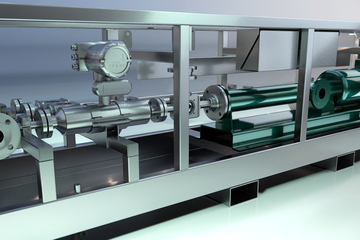Overview
Challenges
- Barite sagging risks due to: prolonged tripping operations, extended static conditions, and reduced circulating rates
- High risk of NPT due to barite-induced string plugging
Results
- Reduced time to identify barite sag or changes in mud weight
- Minimized NPT by avoiding string plugging and long circulation times
- Aided remote operations to maintain specified mud weight and avoid additional barite sagging
A major operator in the North Sea faced serious barite sagging challenges while drilling with an invert emulsion fluid (IEF) system.
The IEF system was lab tested against many risks—barite sagging included—prior to developing the final fluid program. While the IEF system’s rheology remained in-spec during dynamic conditions, it could not withstand prolonged static conditions at high temperatures and pressures downhole. These conditions eventually caused the barite to sag or drop out of the IEF system, leading to out-ofspec mud weight and rheology and potential plugging of the string.
The operator asked Baker Hughes to develop an early warning solution to identify the onset of barite sagging. This would allow the drilling team in the remote center to detect slight changes to mud weight much faster than is possible for a rig crew relying on less frequent manual checks. Without early detection and quick action, the level of barite sag would make remediating the fluid properties much more challenging—requiring long circulation times and increasing the risk of stuck drillstring.
Developing an automated monitoring solution
Baker Hughes proposed its i-Trak™ automated fluids monitoring service, utilizing the i-Trak™ automated fluids monitoring unit (AFM) for continuous monitoring of fluid and drilling parameters combined with automated analysis and real-time, expert technical support.
Download the full case study to learn more.



